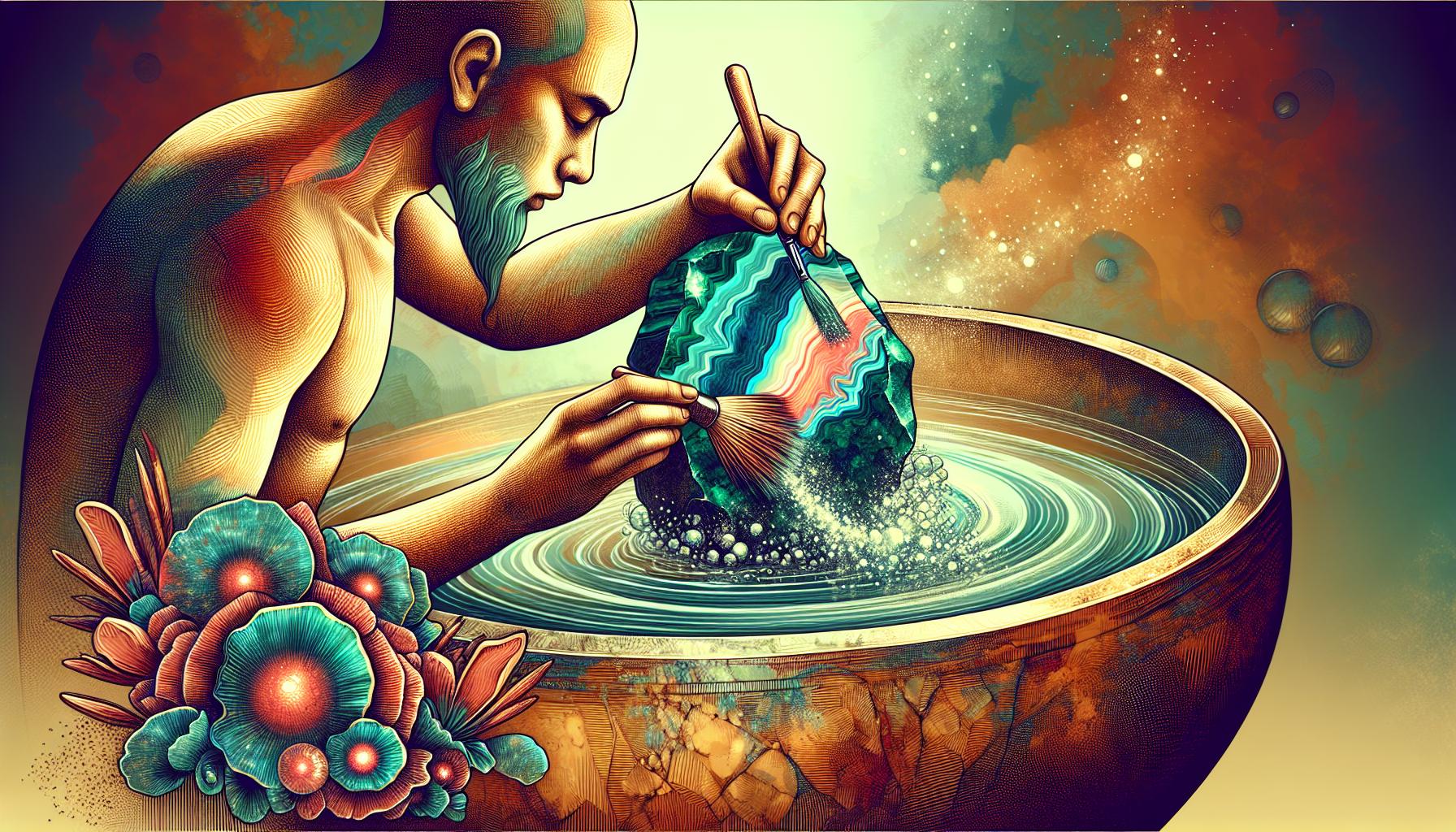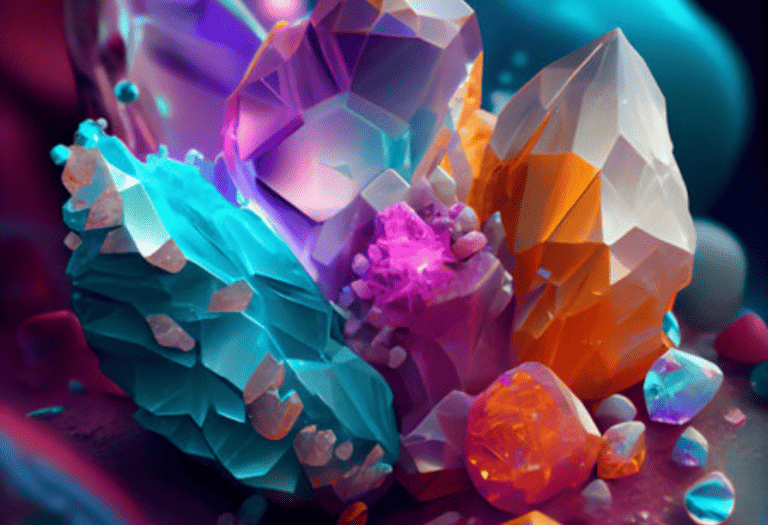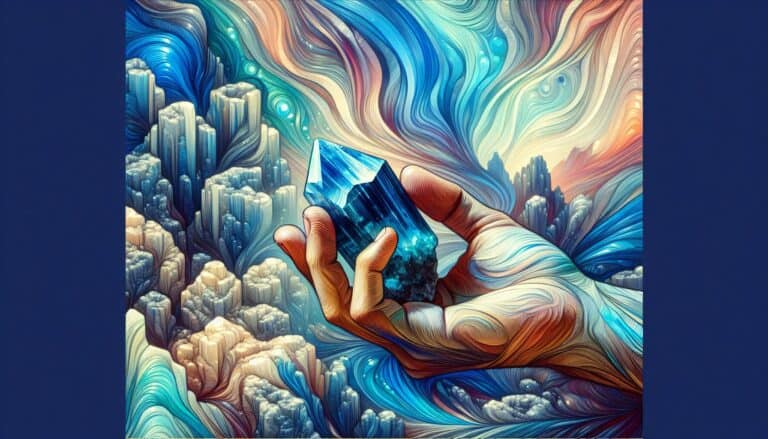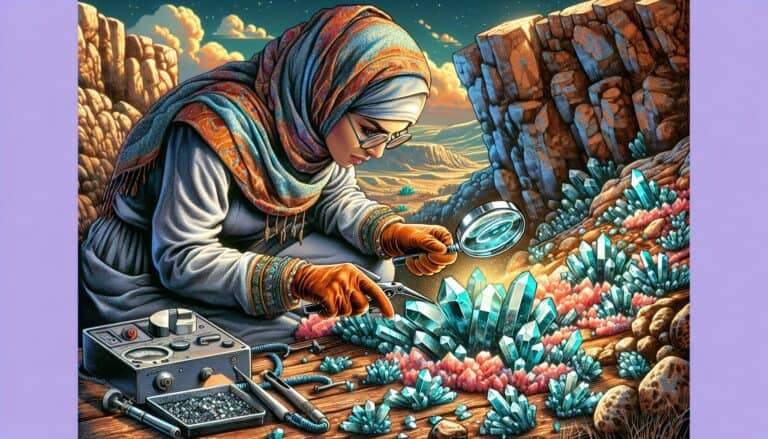Discovering the vibrant beauty of malachite is like uncovering a gem of the Earth’s rich tapestry.
This striking mineral, known for its deep green hues and intricate patterns, is not just a feast for the eyes but also a favorite among collectors and jewelry enthusiasts.
But how do you know if you’ve truly found malachite? With its distinctive characteristics, identifying this mineral is easier than you might think.
In this guide, you’ll learn the key features that set malachite apart, ensuring you can spot genuine malachite with confidence.
Deep green with banded swirls, that’s the malachite dream. Streak test confirms, green it screams. Non-magnetic, soft as chalk, single light beam bends. Find it near copper, not a diamond friend.
How to Identify malachite Through Testing
Visual Inspection
When trying to identify malachite, your first step should be a thorough visual inspection. Look for the tell-tale deep green color and the unique banded patterns that are characteristic of malachite. You should also check for its typical opaque transparency and the presence of a glassy to dull luster which are strong indicators of the mineral.
The Streak Test
One of the simplest tests to confirm malachite is the streak test. All you need to do is drag your specimen across a piece of unglazed porcelain tile. Malachite will leave a green streak behind. Since the streak of malachite is always green, it can be a reliable indicator of authenticity.
Magnet Test
Malachite is not magnetic, so if your specimen is attracting a magnet, it’s likely not genuine malachite. This test can help you easily rule out some faux materials that are sometimes used to imitate malachite.
Hardness Test
Using the Mohs scale of mineral hardness, malachite ranks between 3.5 to 4. This means that it can easily scratch a penny but can’t scratch glass. Testing the hardness of your specimen against known standards can confirm if it fits the profile of malachite.
Birefringence Test
Malachite does not exhibit birefringence. Therefore, when placed under a petrographic microscope, if your sample shows two distinct refracted rays, it’s likely not malachite.
Checking The Diaphaneity
Diaphaneity refers to the transparency or translucency of a mineral. Malachite is typically opaque but may show slight translucency on thin edges. Observing your specimen under light can help determine its level of diaphaneity.
Single or Double Refraction
As a rule, malachite exhibits single refraction; when light passes through, it does not split into two paths. If your sample shows double refraction, it may be a sign that you’re not dealing with real malachite.
Refractive Index Test
Malachite has a refractive index of 1.65 to 1.90. Specialized equipment is required to measure this, but if you have access to such tools, this test can provide a scientific validation of the malachite’s authenticity.
Finding The Specific Gravity
The specific gravity of malachite ranges between 3.6 to 4.0. This measurement can be calculated by comparing the sample’s weight in air to its weight in water. Values within this range support the identification of a specimen as malachite.
Identifying Malachites in the Field
If you’re prospecting for malachite in the field, look for rocks that display shades of green and are typically found near copper deposits. They commonly form in the oxidation zones of copper ore bodies.
Recognizing Potential Malachite Rocks
In their natural environment, potential malachite rocks might be encrusted with other minerals and not immediately apparent. Inspect such rocks for green coloration and other characteristics discussed previously. When raw and unpolished, malachite will often have a rougher texture, yet the distinctive green hue is a consistent guide.
Physical Characteristics of malachites

When you’re keen on identifying malachite, observe its unique physical characteristics. Malachite boasts a vivid green color that ranges from light to dark shades, typically exhibiting banded patterns that are unique to each specimen.
Essential Attributes
Here are key features to look for:
- Color and Patterns: Malachite is known for its deep green color, often accompanied by concentric bands or eye-like patterns.
- Luster: This mineral typically has an earthy to submetallic luster, creating a dull shine on its surface.
- Opacity: Malachite is opaque, meaning you can’t see through it, which sets it apart from similar minerals.
- Texture: It has a smooth texture, with older specimens showing a slightly weathered appearance.
- Streak: When you drag malachite across a porcelain streak plate, it leaves a green streak.
- Hardness: With a Mohs hardness scale rating between 3.5 and 4, it’s relatively soft, so you’ll find that it scratches easily.
- Crystal Form: Malachite crystallizes in the monoclinic system, often forming needle-like crystals or fibrous layers.
- Breakage and Cleavage: It tends to break in a botryoidal manner, which means it has a globular, external form, much like a bunch of grapes.
Understanding these physical properties can greatly assist you in distinguishing malachite from imitators. Remember that malachite’s texture, luster, and particularly its striking green color and banding are tell-tale signs that you’re dealing with the genuine article. Keep this information handy when assessing potential malachite samples to ensure authenticity.
How Are malachite Formed?
Malachite’s genesis is fascinating and begins deep within the earth. It is primarily a secondary mineral, meaning it forms when water and carbon dioxide permeate into the earth and react with copper ores. This process produces the distinctive green color that you recognize as malachite. These reactions typically occur in the upper oxidized parts of copper ore deposits.
Copper-rich solutions are essential, and the presence of carbonate rocks provides the ideal environment for malachite’s formation. These carbonate rocks act as a chemical precipitating agent. Over time, malachite deposits grow layer upon layer, which leads to the characteristic banded patterns that make this mineral highly sought after.
It’s crucial to note that malachite forms at a low temperature and under a very low-grade metamorphism, conditions that facilitate the growth of its unique botryoidal, or globular, appearance. The process can occur in various settings, from the hollows of underground rock layers to the spaces between rock particles in the soil.
To further understand the creation of malachite, you need to explore the regions where copper deposits are commonly found. Countries like the Democratic Republic of Congo, Zambia, Russia, and Australia are renowned for their extensive malachite mines. The mineral thrives in these locales due to the optimal geologic conditions present.
Remember, the way malachite forms contributes to its identification. When analyzing a potential sample, examining the mineral’s geological context can provide clues about its authenticity.
Preparation for malachite Hunting
Gathering the Right Tools
When you’re setting out to find malachite, having the right tools on hand is essential for success. Start by equipping yourself with a sturdy geologist’s hammer; it’s indispensable for safely breaking rocks to uncover potential malachite specimens. Protective eyewear is a must to guard against flying debris. Additionally, invest in a handheld GPS device or a detailed topo map of your hunting area – knowing your location is crucial when navigating mineral-rich yet potentially treacherous terrain.
Carry along a field guidebook specific to the minerals and rocks in the region you’re exploring. This will significantly aid in on-spot identification and classification. Ensure you have adequate storage – specimen boxes or wrap individual finds in bubble wrap to protect them during transit. Keep these essentials in mind:
- Geologist’s hammer
- Safety goggles
- GPS or topo map
- Field guidebook
- Specimen storage
Safety Considerations
Priority number one is your safety. Always notify someone of your planned location and return time before heading out. Wear appropriate clothing, including long pants, a long-sleeved shirt, and durable gloves, to protect against cuts and scrapes. Sturdy boots with ankle support are imperative to maintain footing and protect against snakes or sharp objects.
- Informing a contact of your plans
- Wearing protective clothing
- Packing a first-aid kit
- Carrying sufficient water
- Respecting legal boundaries
Handling and Care of Found malachites

Once you’ve successfully located and extracted malachite from its natural environment, the next crucial steps involve proper cleaning and storage. Handling your finds with care can not only preserve their quality but also enhance their beauty.
Cleaning Malachites
To clean malachite, you’ll need lukewarm water, a soft brush, and a mild detergent. Harsh chemicals or ultrasonic cleaners can damage the stone, so it’s vital to stick with gentle products.
- First, rinse your malachite in lukewarm water to remove any loose sediment.
- Use a soft brush dipped in water with a touch of mild detergent to gently scrub the surface.
- Rinse the stone once more to wash away soap residue.
- Pat the malachite dry with a soft cloth, making sure it’s completely devoid of moisture.
Remember that malachite is susceptible to acids, even mild ones, so ensure your detergent is pH-neutral.
Storing Malachites
Properly storing malachite is just as important as the initial cleaning process.
- Wrap your malachite in a soft cloth to prevent it from being scratched.
- Store it in a cool, dry place away from direct sunlight as UV radiation can cause the colors to fade over time.
- Avoid placing malachite near harder stones or materials that could scratch or chip its surface.
For those with large collections, consider investing in a storage system with individual compartments or padded slots for each piece. Not only does this keep your malachite safe, but it also makes for an organized and easily accessible collection.
Conclusion: Confirming Malachite is Real
You’ve now got the know-how to identify malachite with confidence.
Remember, it’s all about the details—color, streak, and structure are your main clues. Once you’ve found a piece, treat it with the care it deserves. Clean it gently and store it securely. With these tips, you’ll not only recognize malachite but also preserve its natural beauty for years to come.
Happy hunting and cherish your geological treasures!


![Texas Rockhounding Sites in [year]: What You’ll Discover & Where](https://observationhobbies.com/wp-content/uploads/2024/01/MZHIzqyqCDorVgqMLNsPb-768x439.jpg)
![Iowa Rockhounding Sites in [year]](https://observationhobbies.com/wp-content/uploads/2024/01/i4AXVDfMyunGn1zPZ8-9V-768x439.jpg)



